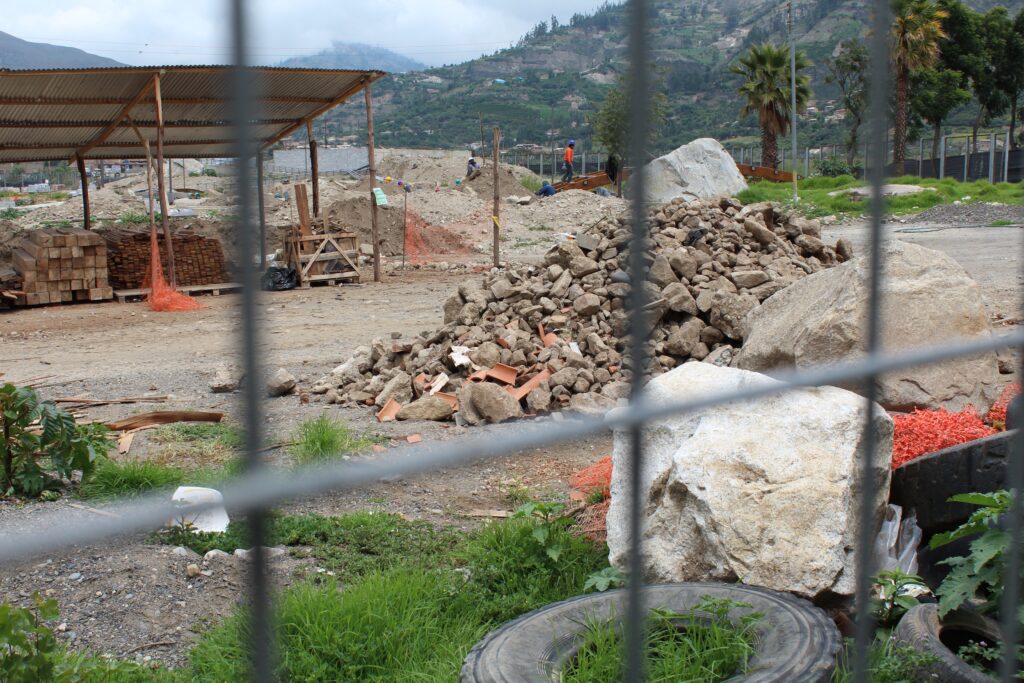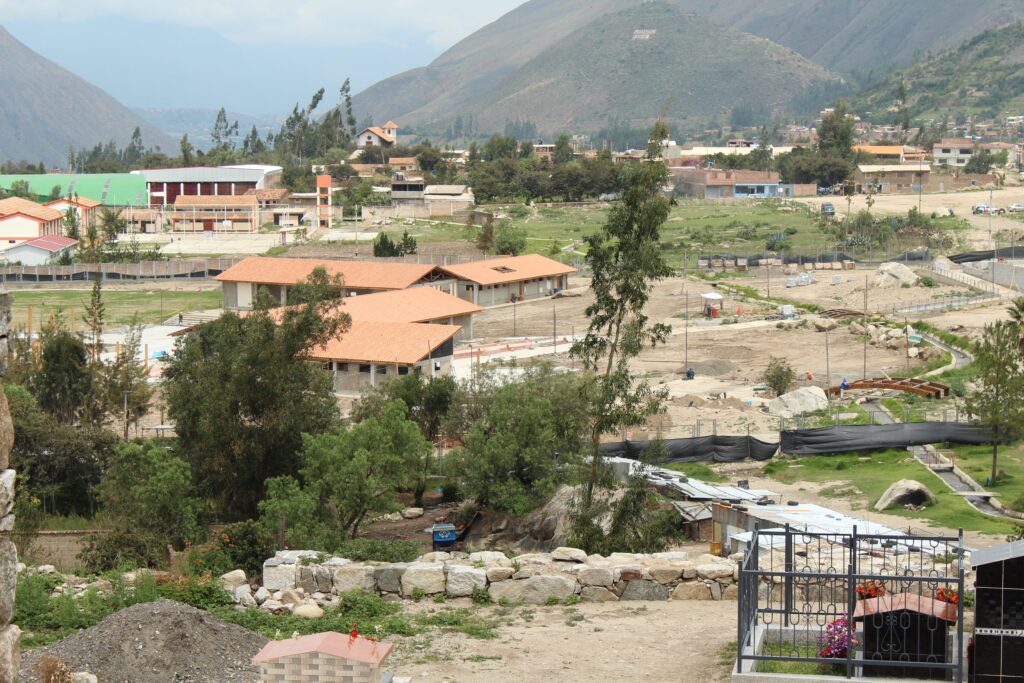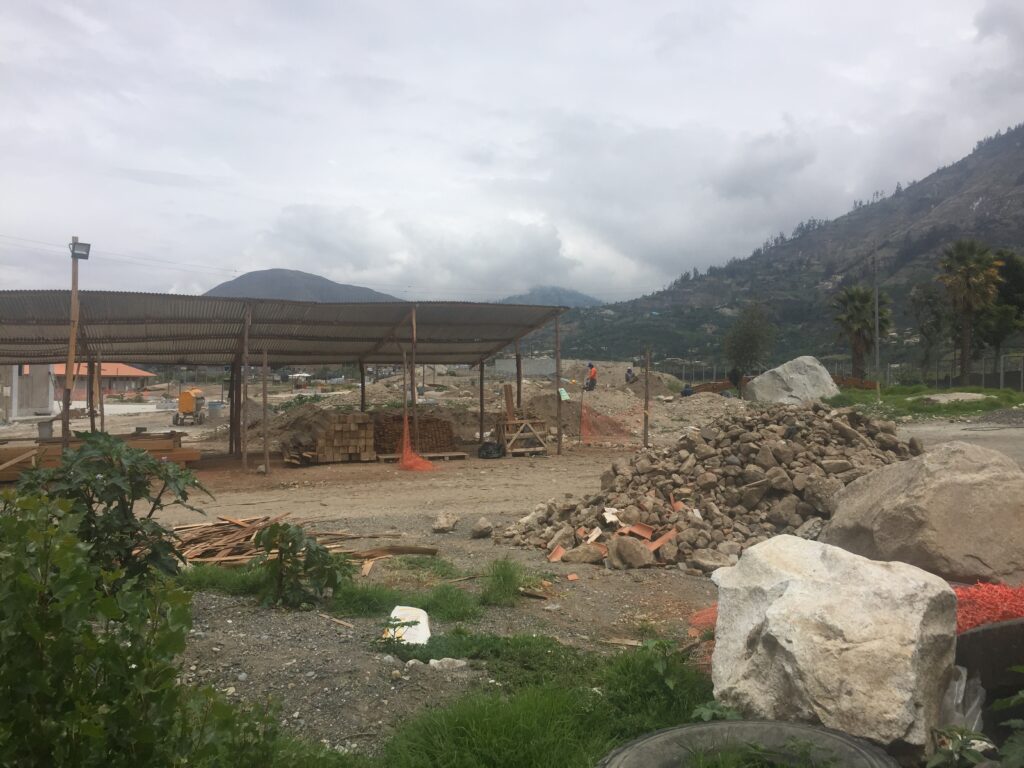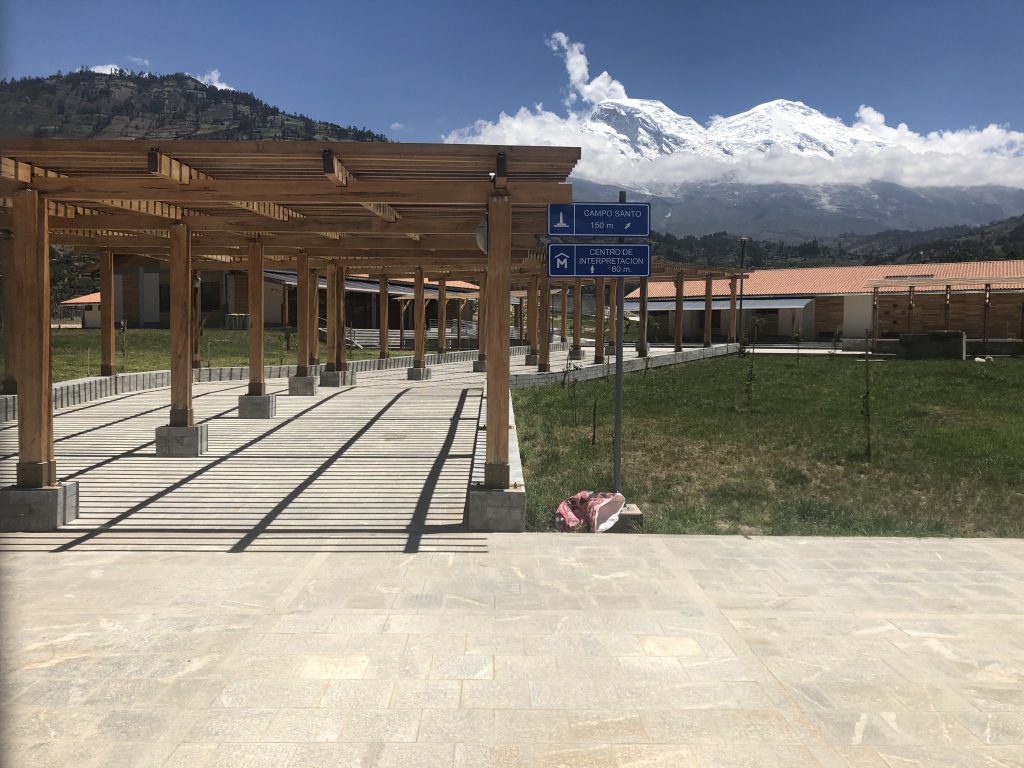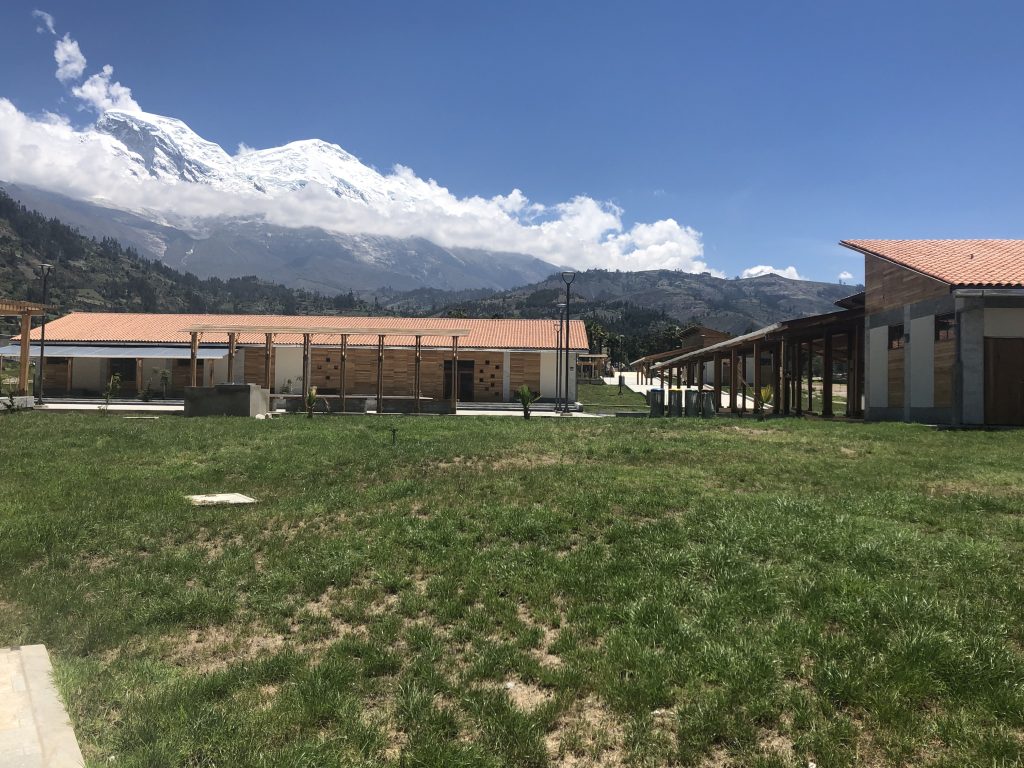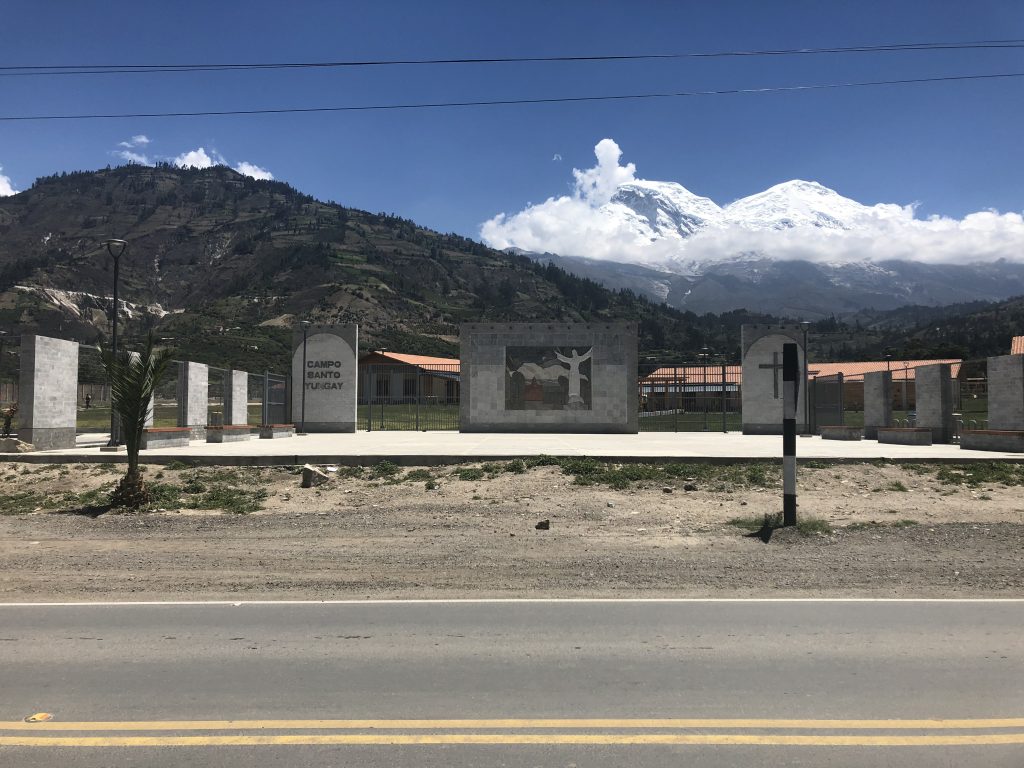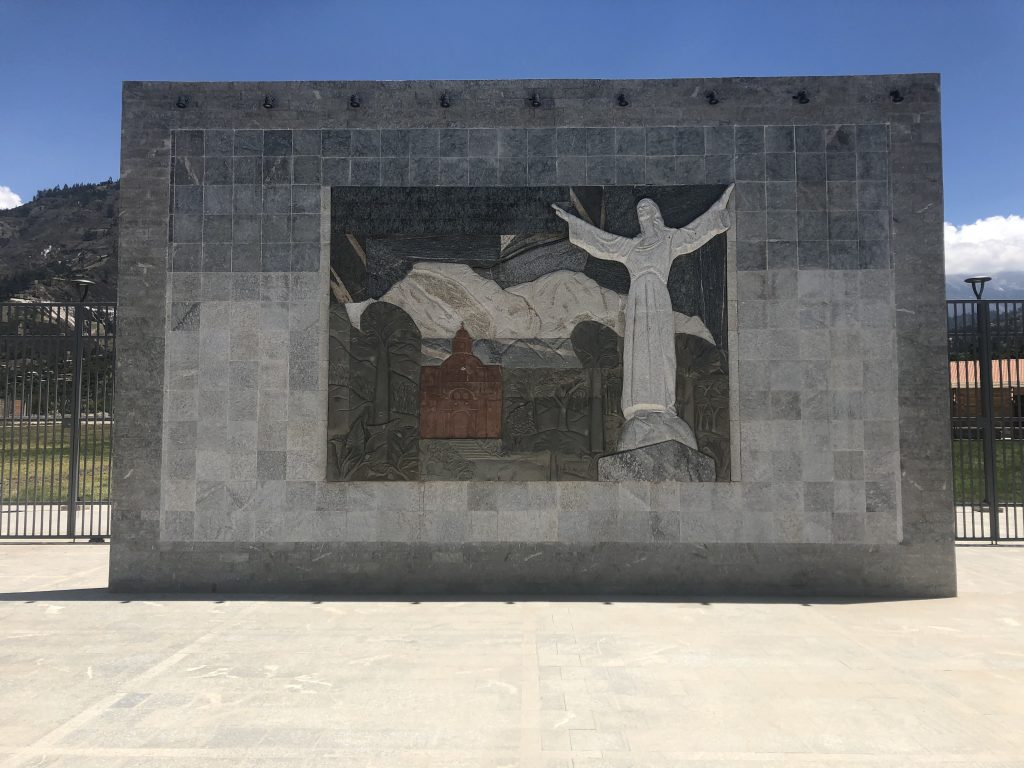Before the landslide, Yungay aspired to be an important tourist destination. This aspiration has not disappeared. For some, the remains of Yungay, known as the Campo Santo, have the potential to attract visitors from around the world. It’s perhaps unsurprising, then, that it has ended up in the hands of the Ministry for Tourism.
The Campo Santo has become one of nine showcase destinations in Peru that are managed by a branch of the Ministry called COPESCO. In aroud 2015, COPESCO began to research the possibility of modernizing the park. The project was contracted to a conglomerate called Consorcio Machu Picchu. After a protracted planning process, approval was given in 2017 and construction began in 2018.
When we visited in January 2019, much of the building work was being carried out by Venezuelan migrants. The front of the park was hidden behind fences and shrouded in black plastic.
The construction was not a welcome development for many Yungay residents. They were sceptical that the site had sufficient pulling power to compete with sites of major international importance like Machu Picchu. Listen to survivor Lucho Cachay describe another controversial aspect of the development.
Construction had ostensibly finished by the time I returned to Yungay in November 2019. But the park was not yet open. A security guard told me that there were some issues with the design of the doors. These needed to be resolved before the public could be admitted. Others spoke of rumours of corruption and overspending.
The buildings photographed include an exhibition centre, a museum, a restaurant and a market space. The frontispiece shows the Huascarán mountain, the Christ sculpture and the red façade of the Cathedral. It was made by Artesanos Don Bosco, an organisation founded by Italian priest Ugo de Sensi who ran carpentry workshops in the region.
After a long hiatus, we visited the Campo Santo again in May 2023. We were suprised to see that some of the new buildings had been demolished and that building work had started again. After asking around, we discovered that there were problems with subsidence. The earthquake created a natural lake at the entrance to Campo Santo. Plan COPESCO is sinking.
As we write, in September 2023, construction is ongoing. The consortium hopes to finish the buildings in November when it plans to stage an inaugration.
